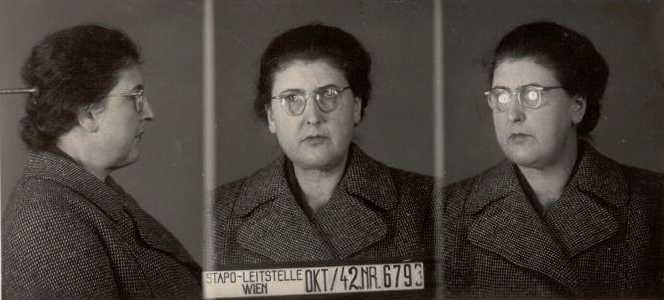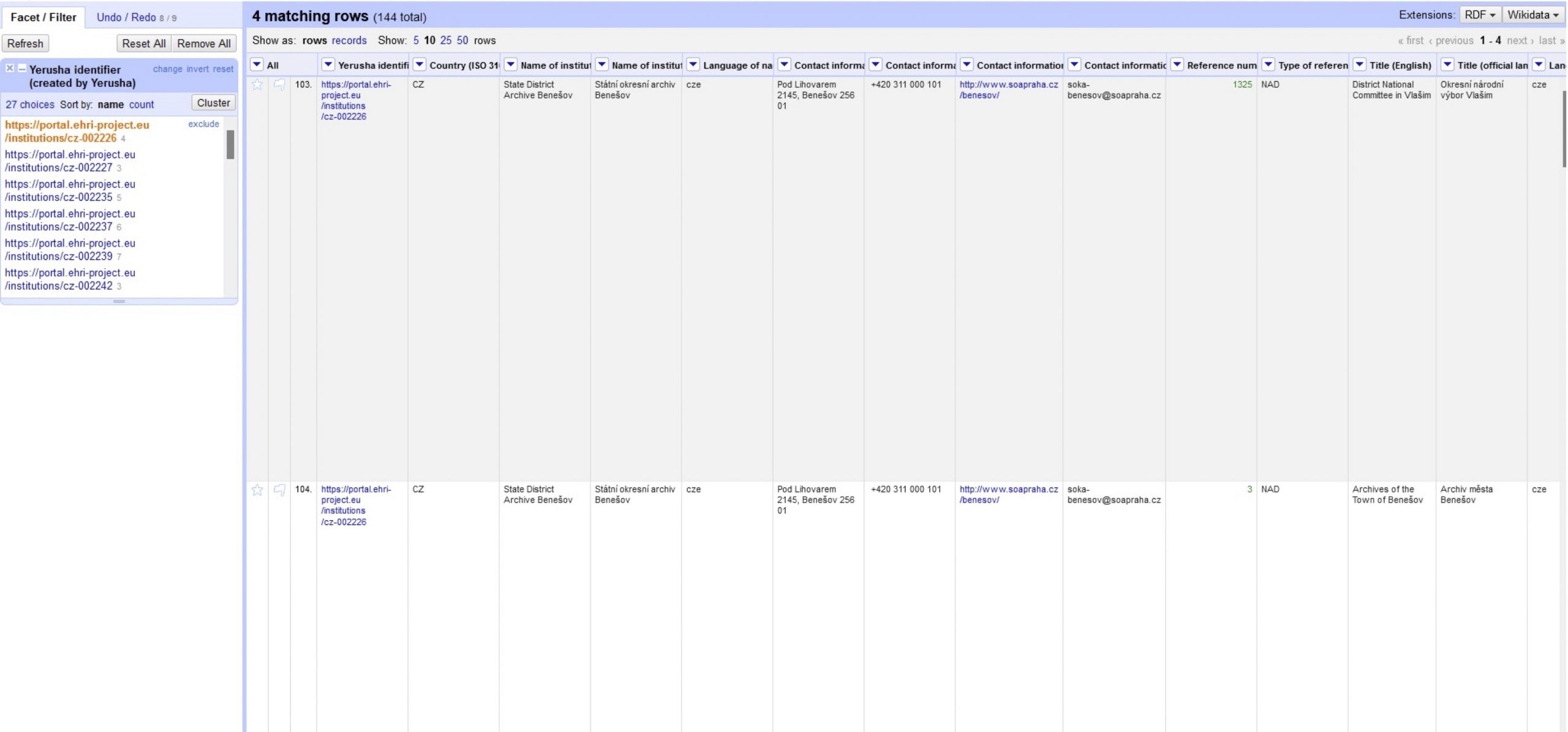“We confirm the receipt of your registration to our state association and welcome you as a fellow sufferer. We would only like to ask you for further information of your reason for arrest; ‘political’ – as you state is too general.”
The quoted lines come from a correspondence that is attached to the application for membership to the Austrian “Concentration Camp Association” of Leopold Berger, an Austrian Holocaust survivor.

Immediately after the war, several organisations were founded in Austria by resistance fighters and people who were politically persecuted by the Nazi regime. The Concentration Camp Association was originally founded in 1946 as Alliance of Politically Persecuted (Bund der politisch Verfolgten – Österreichischer Bundesverband). It operated as an umbrella organisation of various victim’s associations and soon became the only advocacy group of all resistance fighters and persecuted Austrians. According to the proportional representation of the political system in Austria after 1945 the Concentration Camp Association was managed by the three political parties in Austria – The Socialist Party, the Austrian People’s Party (Conservatives) and the Communist Party. Due to conflicts between the parties in the face of the Cold War, the association was dissolved in 1948 and the three parties founded individual associations.
The membership in the Concentration Camp Association entitled members to additional rations of food, cigarettes and clothing. The association also assisted their members in finding accommodation.
The “KZ-Verband” collection of the Documentation Centre of Austrian Resistance (DÖW) consists almost entirely of applications for membership to this “Alliance of Politically Persecuted” between 1946 and 1948.
Please follow the link for the EHRI institution description of the DÖW:
The collection contains approximately 15,000 files on individuals. The forms filled in by applicants include personal data and information on family members as well as information on the reason for their arrest and the length of imprisonment in jails, ghettos and concentration camps. Most files also contain additional copies of documents on “Schutzhaft” (protective custody), confirmation of release or CVs and letters. In many cases photos of the applicant are included. The files of the Concentration Camp Association therefore hold the earliest documentation on victims of the Nazi Regime in Austria after WWII beside material collected in DP camps.
The collection is a unique source for information on Holocaust survivors in Austria. Many files, for instance, deal with Austrian Jews who survived the war in hiding. Their forms and additional documents give a rare insight into their fate during and after WWII.The files also document the fate of political opponents and Jewish victims of the Holocaust in Austria who did not survive. 1
See fullscreen visualisation of “Map of family’s path of persecution:”
Mapping the file of the Concentration Camp Association of Leopold Berger was made possible by Neatline (an Omeka plugin).
Until 1946 Austrian victim associations accepted only politically persecuted Austrians and former resistance fighters as members. This corresponded with the political efforts of the immediate post-war period to position Austria as the first victim of the Nazi regime.2 This also presents a challenges for the evaluation of the files: In view of the Austrian “victim myth” and their late acceptance in Austrian victim associations, many Jewish applicants – like Leopold Berger – emphasized their political memberships of parties, preferring to declare themselves political opponents or resistance fighters against the Nazi regime.
The collection also holds correspondence on cases in which members who had been admitted were excluded from the alliance when it became clear that imprisonment in a concentration camps was due to their persecution on the grounds of their sexual orientation, and not their political activities.
In the 1970s, the files of the Concentration Camp Association were given to the DÖW.
Leopold Berger was born in 1899 in Obersiebenbrunn, Lower Austria. After secondary school he attended an agricultural college and in 1919 began work as a farmer. He married Lola Gross, born 1890. In 1918 their son was born, in 1922 their daughter. The couple was protestant, but considered Jewish according to the “Nuremberg Laws”. Leopold Berger was also member of the Social Democratic Workers’ Party of Austria.
The deprivation and expropriation of Jewish farmers started immediately after the “Anschluss” in 1938. By 1942, Leopold and Lola Berger were forced to move into a group apartment (“Sammelwohnung”) in Grünentorgasse 12 in Vienna.
When the mass transportations left from Vienna in autumn 1942, Leopold and Lola Berger attempted to illegally escape to Switzerland with forged papers. On October 18th 1942 they were arrested by the Gestapo on a train at the Westbahnhof train station in Vienna, trying to leave to Munich. The Gestapo found forged birth documents and a forged legitimation of the National Socialist People’s Welfare (NSV). They were held in custody for falsification of documents at Rossauer Lände in Vienna.
In January 1943 both Lola and Leopold Berger were transported to Auschwitz. Lola Berger died there on February 10th 1943. Leopold Berger was transported to Gross-Rosen in January 1945 and survived the Holocaust.
After the war he returned to Austria and became member of the Concentration Camp Association.

Between 2006 and 2009 the DÖW analysed the files for the project “Registration by name of victims of political persecution 1938 – 1945“ (Namentliche Erfassung der Opfer politischer Verfolgung 1938 – 1945). The records were digitized in the years afterwards and made accessible to users of the DÖW archive. In 2018, the DÖW began making examples of the Concentration Camp Association files of Holocaust victims available via their online tool Memento Vienna. The mobile website, optimised for devices such as tablets and smartphones, makes visible the last-known addresses of those murdered as well as archival documents and photographs of people and buildings in the city.
Notes
- On records in Austrian DP camps see: Laura Jockusch, Collect and Record! Jewish Holocaust Documentation in Early Postwar Europe, Oxford University Press, 2012. ↩
- Brigitte Bailer, Der KZ-Verband. Informationen zu einer wesentlichen Quelle des Projektes der Namentlichen Erfassung der Opfer der politischen Verfolgung. In: DÖW (ed.), Jahrbuch 2007, DÖW 2018, (36-49). ↩


Diane Schafer
My great uncle and family were sent to the resettlement camp in Obersiebenbrunn, Austria after uprooted from their home in Karamurat (Ferdinand I) in 1941. We have his death noted at May 4, 1942 in the camp. I would appreciate any information you have on his wife and children.
Thank you,
Diane Schafer
elstel
I enjoyed this blog post. It was inspiring and informative. You can also check about Austria´s People Party from elstel.org